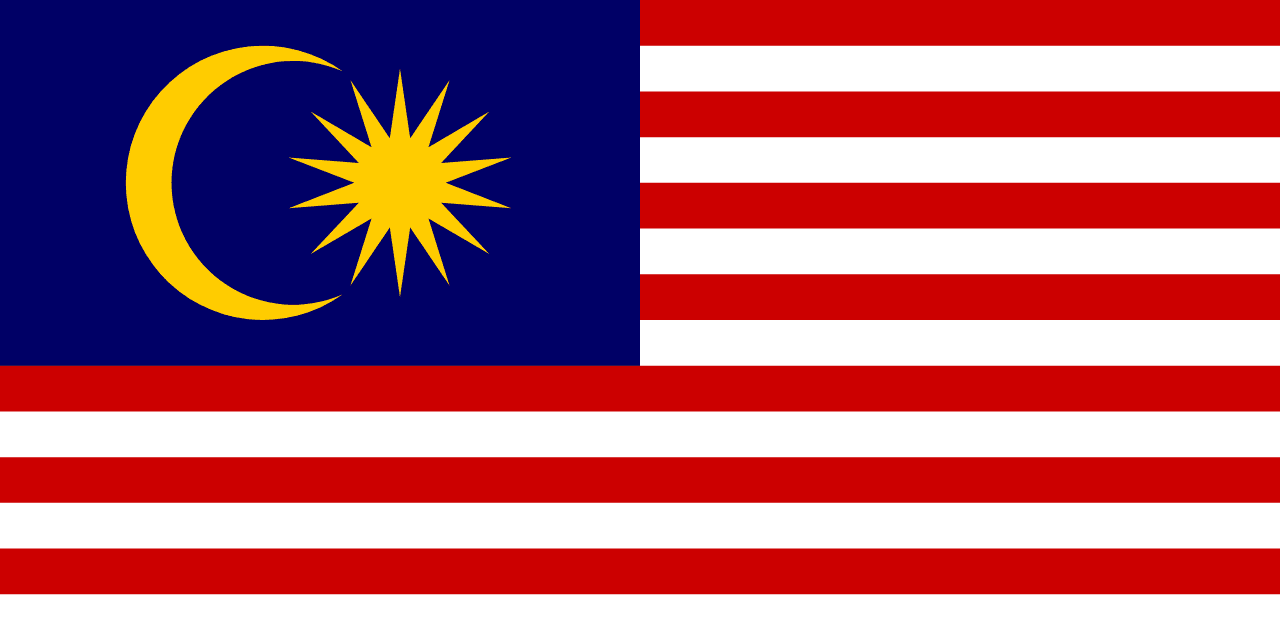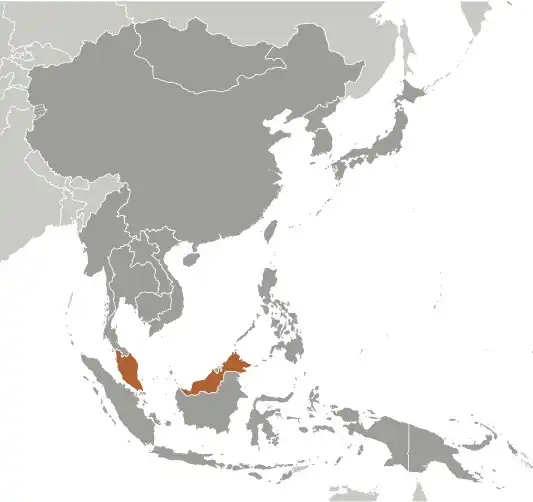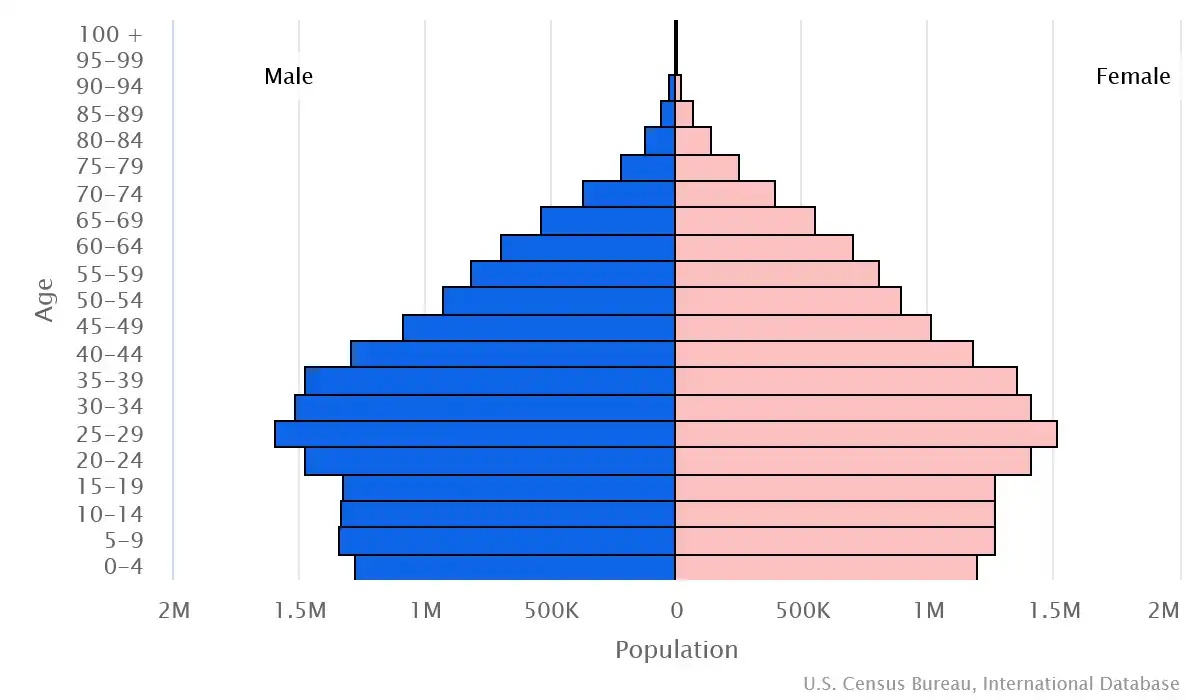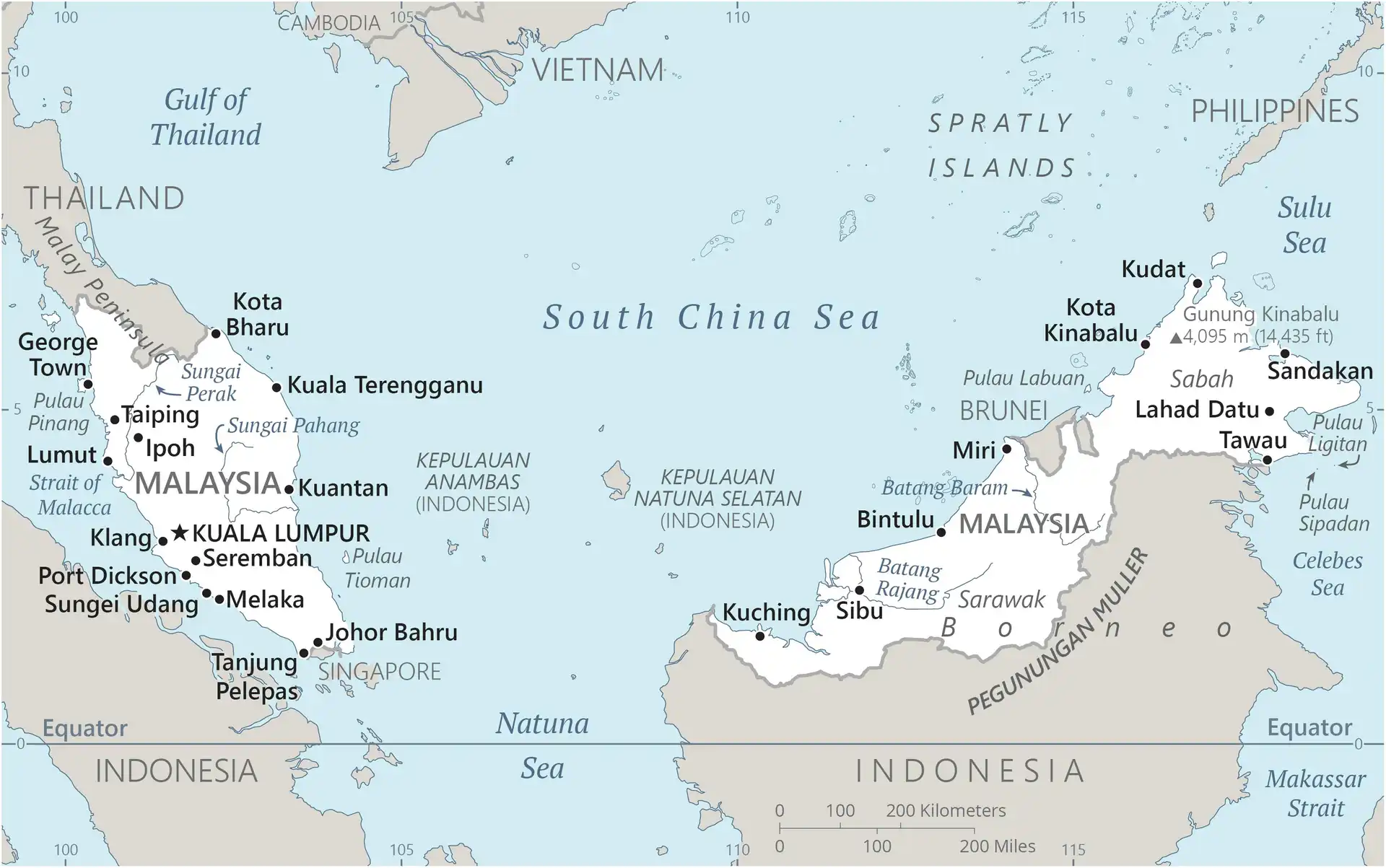
Malaysia Country Profile
Key Facts of Malaysia

| Government type: | federal parliamentary constitutional monarchy |
| Capital: | Kuala Lumpur; note - nearby Putrajaya is referred to as a federal government administrative center but not the capital; Parliament meets in Kuala Lumpur |
| Languages: | Bahasa Malaysia (official), English, Chinese (Cantonese, Mandarin, Hokkien, Hakka, Hainan, Foochow), Tamil, Telugu, Malayalam, Panjabi, Thai |
Malaysia Demographic Data
Ethnic Groups in Malaysia(2023 est.)
Religious Groups in Malaysia (2020 est.)
Age pyramid of Malaysia

Malaysia Economy Statistics
Economic overview of Malaysia
upper middle-income Southeast Asian economy; implementing key anticorruption policies; major electronics, oil, and chemicals exporter; trade sector employs over 40% of jobs; key economic equity initiative; high labor productivity
Malaysia Real GDP (purchasing power parity) in Billion $
Malaysia Real GDP per capita in $
Malaysia's Exports & Imports in billion $
Top 5 Import Partnerin 2022 (57%) of Malaysia
Top 5 Import Commodities in 2022 of Malaysia
- integrated circuits 💻
- refined petroleum ⛽
- crude petroleum 🛢️
- coal ⚫
- vehicle parts/accessories 🛠️🚗
Top 5 Export Partnerin 2022 (51%) of Malaysia
Top 5 Export Commodities in 2022 of Malaysia
- integrated circuits 💻
- refined petroleum ⛽
- natural gas 💨
- palm oil 🛢️
- crude petroleum 🛢️
Geography of Malaysia
Map of Malaysia

Land and Water Distrubtion of Malaysia
Natural Resources of Malaysia
- tin 🪙
- petroleum 🛢️
- timber 🌲
- copper 🟧🪙
- iron ore ⛓️
- natural gas 💨
- bauxite 🪨
Climate inMalaysia
tropical; annual southwest (April to October) and northeast (October to February) monsoons
History of Malaysia - a Summary
Malaysia’s location has long made it an important cultural, economic, historical, social, and trade link between the islands of Southeast Asia and the mainland. Through the Strait of Malacca, which separates the Malay Peninsula from the archipelago, flowed maritime trade and with it influences from China, India, the Middle East, and the east coast of Africa. Prior to the 14th century, several powerful maritime empires existed in what is modern-day Malaysia, including the Srivijayan, which controlled much of the southern part of the peninsula between the 7th and 13th centuries, and the Majapahit Empire, which took control over most of the peninsula and the Malay Archipelago between the 13th and 14th centuries. The adoption of Islam between the 13th and 17th centuries also saw the rise of a number of powerful maritime states and sultanates on the Malay Peninsula and the island of Borneo, such as the port city of Malacca (Melaka), which at its height in the 15th century had a navy and hosted thousands of Chinese, Arab, Persian, and Indian merchants.
The Portuguese in the 16th century and the Dutch in the 17th century were the first European colonial powers to establish themselves on the Malay Peninsula and in Southeast Asia. However, it was the British who ultimately secured hegemony across the territory and during the late 18th and 19th centuries established colonies and protectorates in the area that is now Malaysia. Japan occupied these holdings from 1942 to 1945. In 1948, the British-ruled territories on the Malay Peninsula (except Singapore) formed the Federation of Malaya, which became independent in 1957. Malaysia was formed in 1963 when the former British colonies of Singapore, as well as Sabah and Sarawak on the northern coast of Borneo, joined the Federation.
A communist insurgency, confrontations with Indonesia, Philippine claims to Sabah, and Singapore's expulsion in 1965 marred the first several years of the country's independence. During the 22-year term of Prime Minister MAHATHIR Mohamad (1981-2003), Malaysia was successful in diversifying its economy from dependence on exports of raw materials to the development of manufacturing, services, and tourism. Former Prime Minister MAHATHIR and a newly formed coalition of opposition parties defeated Prime Minister Mohamed NAJIB bin Abdul Razak's United Malays National Organization (UMNO) in 2018, ending over 60 years of uninterrupted UMNO rule. From 2018-2022, Malaysia underwent considerable political upheaval, with a succession of coalition governments holding power. Following legislative elections in 2022, ANWAR Ibrahim was appointed prime minister after more than 20 years in opposition. His political coalition, Pakatan Harapan (PH), joined its longtime UNMO rival to form a government, but the two groups have remained deeply divided on many issues.
